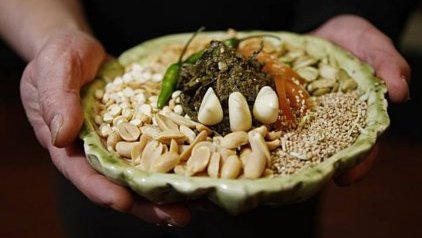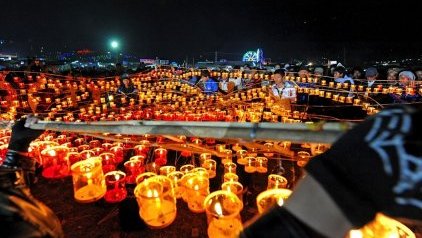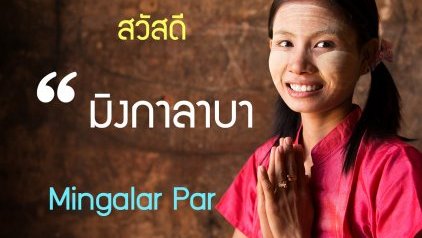Explore The Enchanting World of Myanmar Art
Myanmar is a country full of ancient traditions and culture. From time to time, Burmese people have adapted different cultures and arts.
- 1. Panbe (the art of blacksmith)
- 2. Panbu (the art of sculpture)
- 3. Pantain (the art of gold and silver smith)
- 4. Pantin (the art of bronze casting)
- 5. Pantaut (the art of making floral designs using masonry)
- 6. Panyan (the art of bricklaying and masonry)
- 7. Pantamault (the art of stone sculpting)
- 8. Panpoot (the art of turning designs on the lathe)
- 9. Panchi (the art of painting)
- 10. Panyun (the art of making lacquer ware)
To describe about the Arts of Myanmar, there are 10 Myanmar traditional arts which are metaphorically called "Ten Flowers". These arts have been passed on from one century to another until today.
1. Panbe (the art of blacksmith)
Traditional blacksmith craft emerged in the early of Bagan period (11th Century) and it had improved in the mid Bagan Ava and Yadanapon period. Myanmar’s traditional blacksmith craft, from Inlay region were famous in the Yadanapon period.
2. Panbu (the art of sculpture)
Myanmar’s traditional sculpture contains wood sculpture, stone sculpture and plaster sculpture. Traditional sculpture emerged before the Bagan period and it improved in the middle of Bagan Era. Myanmar’s sculpture base the religion of Buddhism which arrived from Southern India in the 11th century. Most of the wood sculptures of Bagan and Ava periods have been lost under various circumstances and only a few are left today. One outstanding wood sculpture belonging to the Bagan period is the one at the old portal of Shwesigone Pagoda at Nyaung-U.
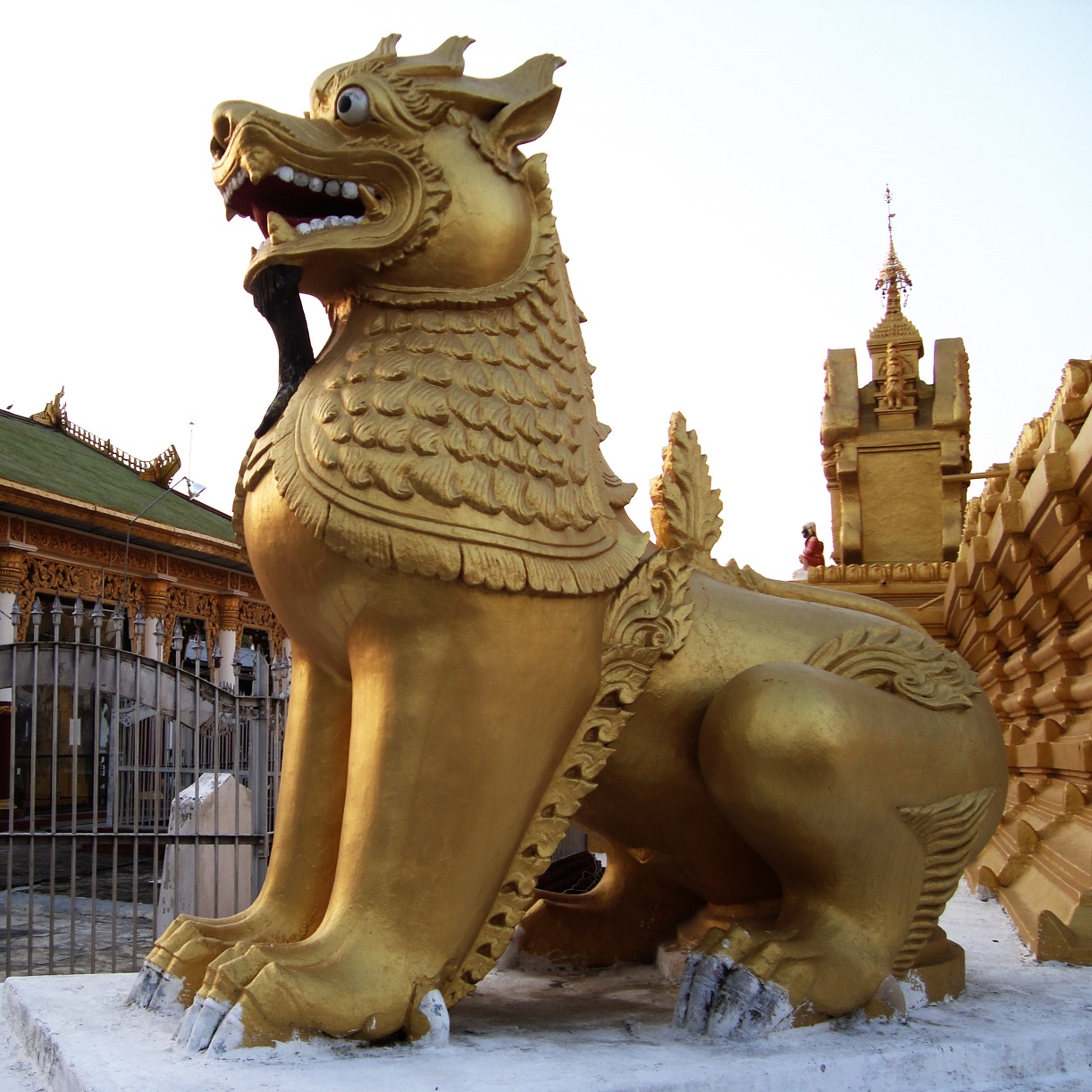
Sculpture Of Myanmar Mythical Lion
3. Pantain (the art of gold and silver smith)
Creating silverware had been with Myanmar for the past 1200 years and judging from the workmanship of the silverware that belong to those early years. According to the crystal palace chronicles, during the reign of King Anawrahta, the relics of Buddha and the three repositories of Buddhist scriptures were brought to Bagan from Suvarna Boumi, the Mons' capital. Going further back into the past, we find Pyu silver works of art discovered from the mounts of old shrines of Sri Ksetra.
4. Pantin (the art of bronze casting)
The art of Pantin is an enterprise producing materials of copper, bronze and brass. Myanmar’s traditional coppersmith’s craft emerged before Bagan period and it improved during Bagan and Ava period.
5. Pantaut (the art of making floral designs using masonry)
The art of Pantaut (stucco sculpture) means a handicraft of making decorative designs in relief with stucco like figures of lions, dragons and floral designs... Myanmar traditional stucco carving emerged before the Bagan period and developed in the Bagan, Ava, Amarapura and Yadanapon period.
6. Panyan (the art of bricklaying and masonry)
Myanmar’s traditional masonry works enjoys worldwide renown for the ancient pagodas and other religious buildings around the Bagan region. The Myanmar’s traditional masonry of Bagan period is the highest developed of all the historical periods. The Myanmar’s traditional masonry have derived from the Mon’s culture of Suvarna Boumi and in the Southern Indian’s culture flun the 11th century. In fact, masonry in Myanmar emerged since the Pyu period in the 1st century.
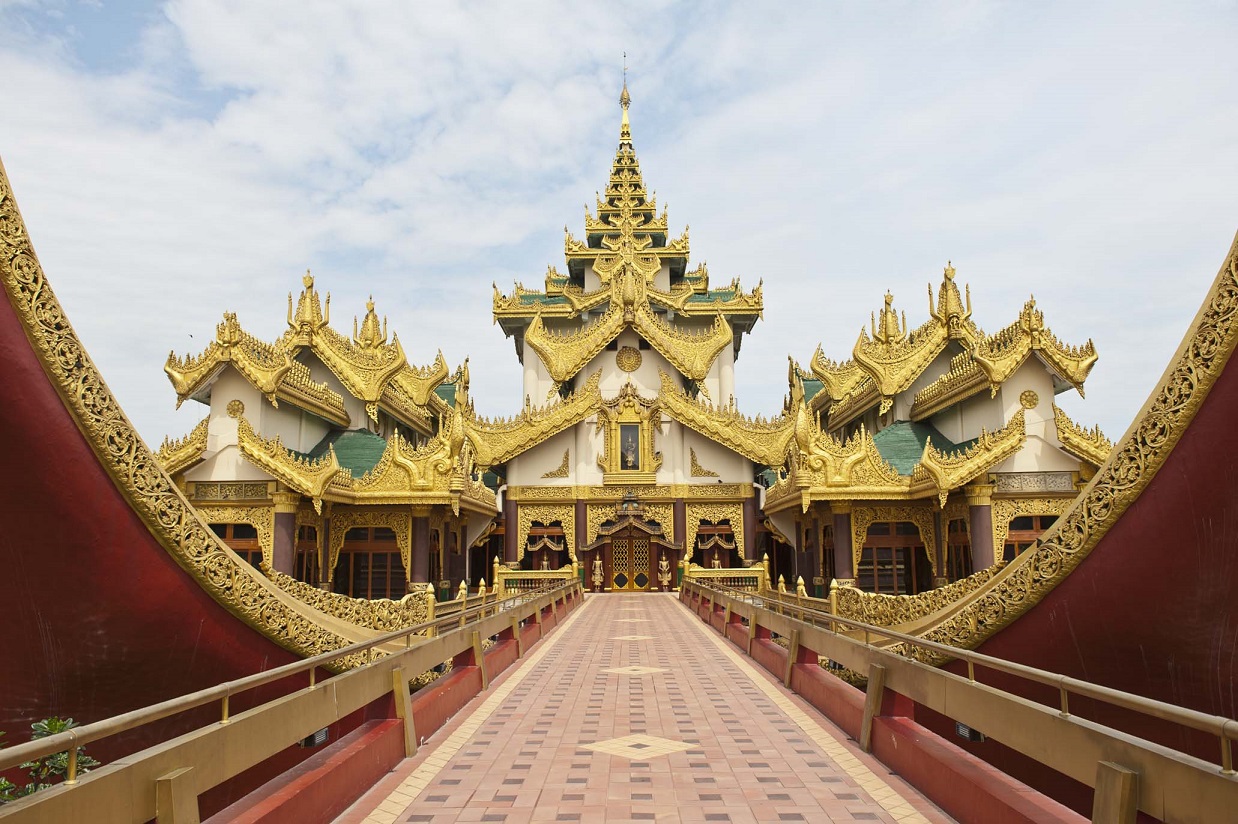
Karaweik Palace
7. Pantamault (the art of stone sculpting)
Stone sculpture is a significant feature of Myanmar fine arts, has to this day been the pride and honor of Myanmar people. Very fine works of art in stone are to be seen at plaques depicting the life of the Buddha at Ananda Pagoda in Bagan, Flower designs in the interior of the portal at Kyawkku-Umin in Nyaung-U Nanhpaya, Myinkapa plaques partraying the 550 Buddhist birth-stories at Puhtotawkyi in Amarapura and the great image at Kyauktawkyi at the foot of Mandalay Hill.
8. Panpoot (the art of turning designs on the lathe)
Myanmar’s traditional crafts of a turner emerged in the Bagan period in the 8th century. Diversity in the shape of the craft of a turner: food containers, boxes, bowls, tables, chairs, etc. all make them lively and attractive. The Myanmar’s traditional arts and crafts owed a great deal of influence of Mon people in the early Bagan period.
9. Panchi (the art of painting)
The art of Panchi (painting) is the one which illustrates living animals and inanimate objects using different colors. Myanmar traditional painting developed with the religion of Buddhism in the Bagan Region. Thus, Bagan become a repository of ancient Myanmar traditional paintings and sculptures in the 11th century. During Yadanabon of Mandalay period, more painting was done in folding books called purapaik and on canvas than on the wall.
10. Panyun (the art of making lacquer ware)
Myanmar traditional lacquer ware emerged in the early part of Bagan period. Myanmar traditional lacquer ware drawing styles derived from many stories of Buddha’s life. On a framework of woven, finely cut strips of bamboo, mixtures of thit-see resin with clay and ash are carefully built-up and finally polished with the ash of fossil wood. The designs are then etched or painted by hand.
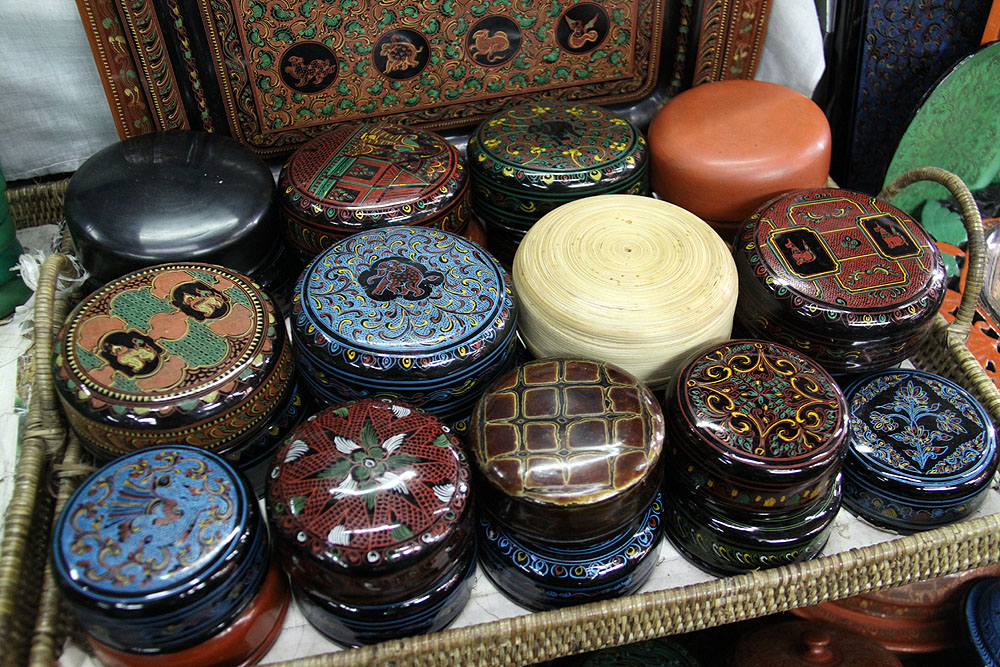
Myanmar Laquerwares
Xuyen
Image sources: Internet.

